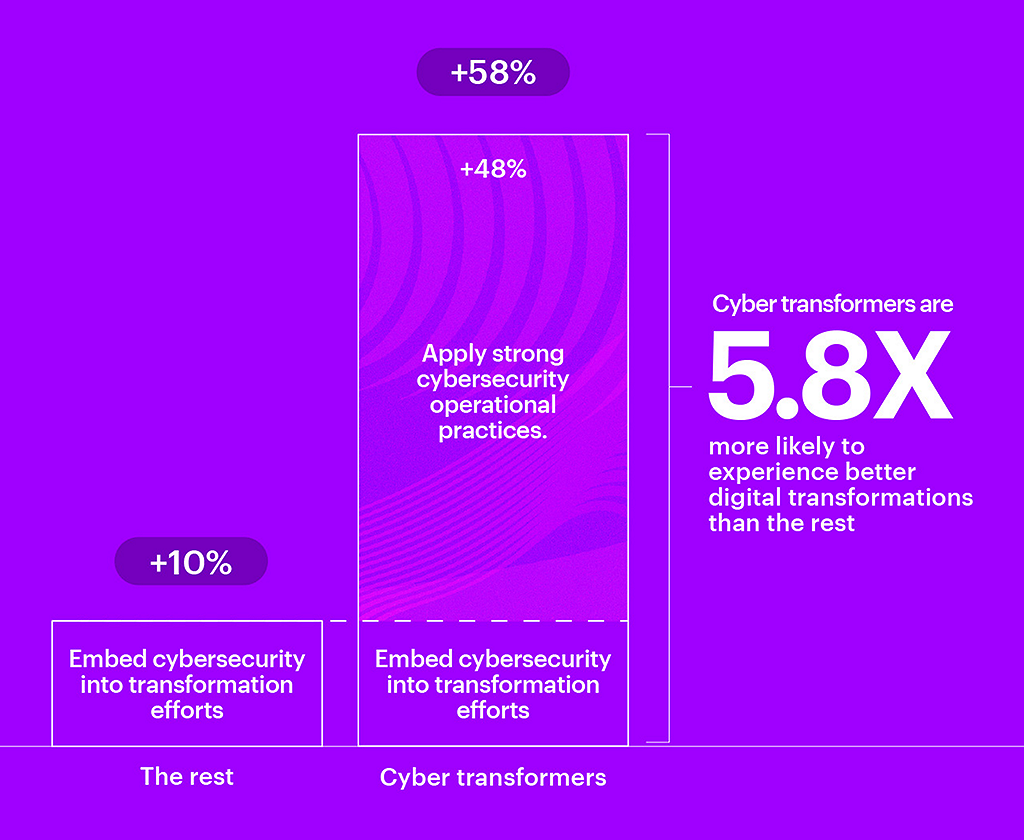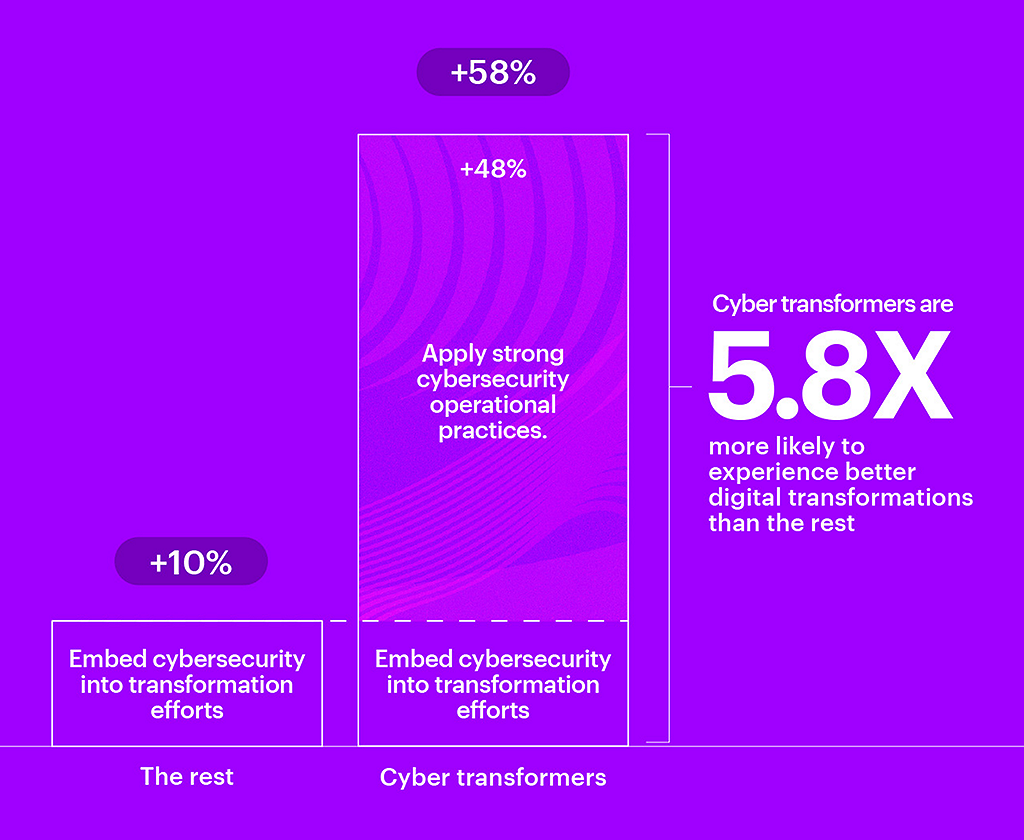RESEARCH REPORT
State of Cybersecurity Resilience 2023
How cybersecurity boosts enterprise reinvention to drive business resilience
10-MINUTE READ
RESEARCH REPORT
How cybersecurity boosts enterprise reinvention to drive business resilience
10-MINUTE READ
The world has shifted and cybersecurity is shifting with it. The desire to transform, faster and more frequently, is prompting some organizations to use cybersecurity as a differentiator to deliver better business outcomes. Our research revealed that organizations that closely align their cybersecurity programs to business objectives are 18% more likely to increase their ability to drive revenue growth, increase market share and improve customer satisfaction, trust and employee productivity.
What’s more, organizations that embed key cybersecurity actions into their digital transformation efforts and apply strong cybersecurity operational practices across the organization—we call them cyber transformers—are nearly six times more likely to experience more effective digital transformations than those that don’t do both.


Yet, some organizations aren’t engaging cybersecurity early enough to meet future challenges and opportunities. We found that, when it comes to embedding security controls, 18% of our survey respondents still deploy them after they’ve finalized a transformation effort—and that’s only if vulnerabilities are detected.


By converting cybersecurity from an incident-driven reaction into part of the fabric of transformation efforts, organizations can boost cybersecurity resilience and position themselves to reinvent the whole enterprise, safely.
We surveyed 3,000 executives from 15 industries and 14 countries. Our research revealed that more than one-half of organizations are beginning to recognize the importance of being secure from the start in any transformation effort.
We discovered that most organizations undergoing digital transformation increase their chances of being fully satisfied with the level of cybersecurity embedded in their digital transformation efforts by 10 percentage points if they follow three cybersecurity actions.
1. Require cybersecurity controls before all new solutions are deployed.
2. Apply cybersecurity incrementally as each digital transformation milestone is achieved.
3. Assign a cybersecurity representative to the core transformation team and a point person to orchestrate cybersecurity across all transformation initiatives.
We identified a group we call cyber transformers—30% of respondents—who are already proving how prioritizing cybersecurity makes a difference.
Cyber transformers build transformation foundations in two ways. They not only embed three key cybersecurity actions into their transformation efforts but also apply strong cybersecurity operational practices from the start.
Cyber transformers outperform the rest when they:
As a result, cyber transformers are nearly 6X more likely to experience more effective digital transformations than the rest.
Strong cybersecurity operational practices set cyber transformers apart from the rest.
1. Cyber transformers excel at risk management.
Cyber transformers are six times more likely than the rest to apply leading risk management practices (65% vs. 11%)
2. Cyber transformers more frequently use cybersecurity as-a-service to enhance operations.
Forty percent of cyber transformers use third parties or managed services providers to administer cybersecurity operations and address talent shortages, versus 24% of the rest.
3. Cyber transformers are more committed to protecting their ecosystem.
Forty-five percent of cyber transformers more often incorporate their ecosystem or supply chain partners into their incident response plan versus 37% of the rest; 41% also require them to meet strict cybersecurity standards versus 29% of the rest.
4. Cyber transformers rely heavily on automation.
A majority (89%) of cyber transformers rely heavily on automation, compared with just 57% of the rest.
Cybersecurity is essential to maintain dynamic protection in every transformation program. As our cyber transformers show, business leaders have an opportunity to make cybersecurity’s impact extend beyond protecting the business in the here and now, to actively influence continuous, dynamic reinvention.